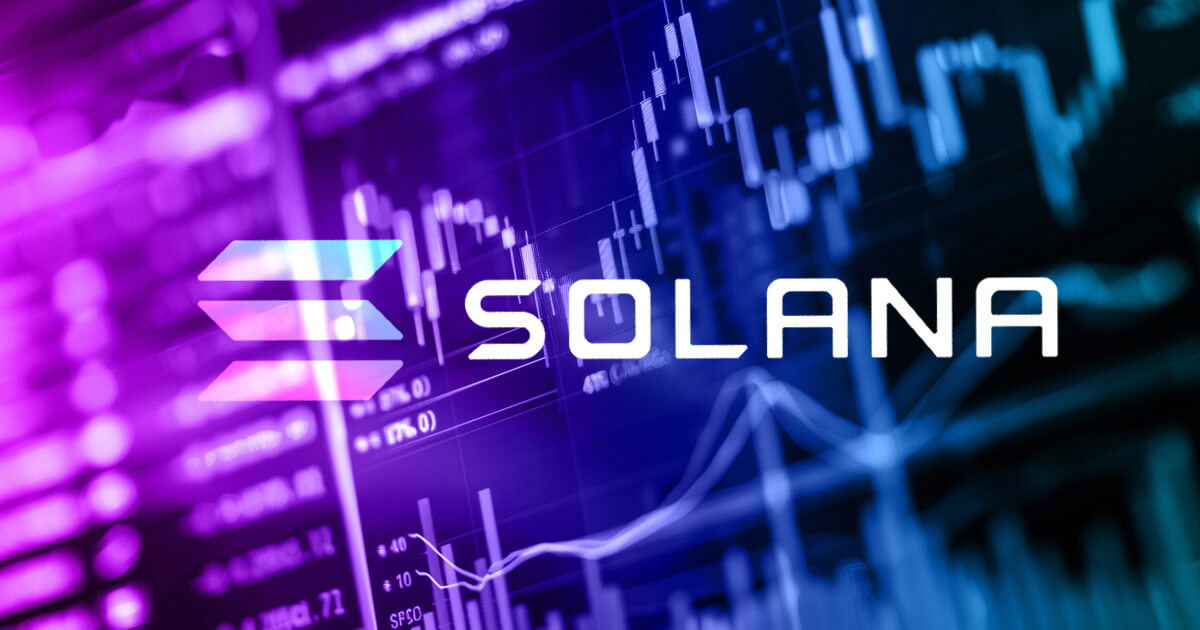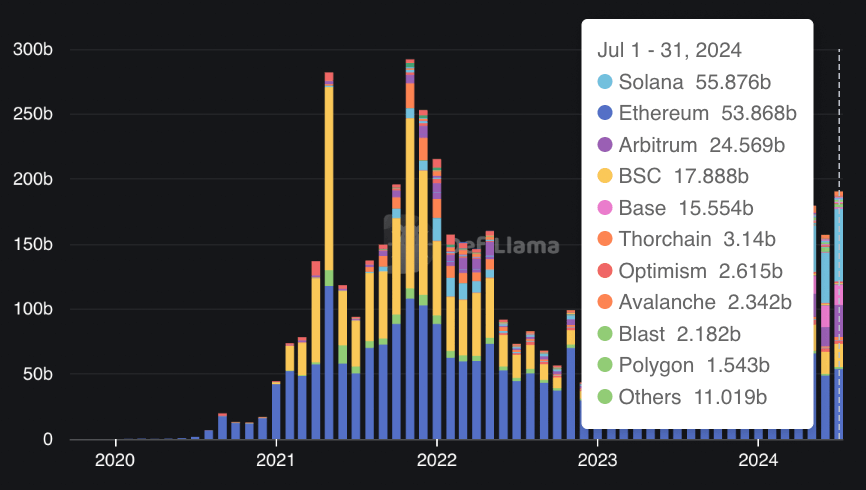Solana July DEX Volume Surpasses Ethereum Amid Wash Trading Concerns

According to DefiLlama data, the Solana network outperformed Ethereum in monthly decentralized exchange (DEX) trading volume in July.
Solana’s DEX trading volume reached $55.8 billion, surpassing Ethereum’s $53.8 billion during the same period. This marks Solana’s second-highest monthly trading volume ever, behind its peak of $60.7 billion in March 2024.

Solana’s volume surge is largely driven by activity on platforms like Raydium, Orca, and Phoenix, while Ethereum’s volume is largely driven by the Uniswap exchange.
Despite these numbers, Ethereum is still the leading DeFi platform, with around 61% of the market and $67 billion in locked assets. In comparison, Solana only has 4.64% of the market, with a total value locked (TVL) of $5.16 billion.
What is driving Solana’s growth?
Analysts cite increased Mimecoin activity as a key reason for the increase in Solana’s DEX trading volume.
Last year, blockchain saw significant growth in a variety of memecoins, from cat-themed tokens to politically inspired tokens. This led to increased liquidity as traders sought to leverage these assets.
Institutional support has also fueled interest in Solana, and speculation about a potential Solana exchange-traded fund (ETF) may have contributed to Solana’s growth. In June, prominent asset management firms VanEck and 21Shares filed with the U.S. Securities and Exchange Commission (SEC) to create a physical Solana ETF.
Market analysts have also noted increased stablecoin usage on Solana. According to Allium data on Visa’s Stablecoin Dashboard, USDC stablecoin trading volume on Solana has surpassed $8 trillion since the beginning of last year, while USDT on the Tron blockchain has hit $6.5 trillion.
Laundry trade concerns
Meanwhile, Solana’s recent surge in DEX trading has raised concerns about potential wash trading. A recent report from anonymous cryptocurrency analyst Flip Research found that 93% of blockchain transactions are inorganic.
The report notes that Solana’s daily trading is heavily influenced by wash trading, MEV bots, and fraud, providing minimal value to retail traders. Flip Research noted:
“Looking at the wallets involved, most of them appear to be bots on the same network doing tens of thousands of transactions. They independently generate fake volume using random amounts of SOL and random numbers of transactions until the project is finished, then move on to the next project.”



